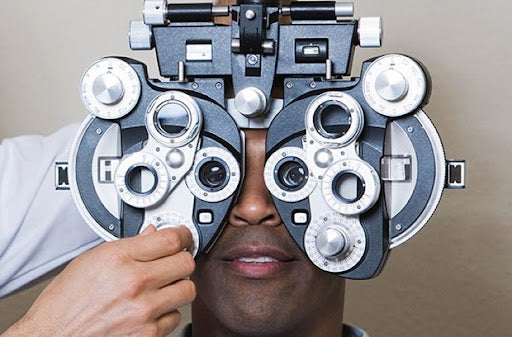However, finding the proper glasses for your facial structure isn't always straightforward. It can be challenging to determine what looks good on you, what compliments your facial design, and what you enjoy. Since there are various types and styles to pick from, it's frequently advisable to get advice and a second opinion. That's where your optician comes in.
Also read: Glass Frames for Different Face Shapes
Where do Opticians come from, and what do they do?
Optometrists & Opticians are optical doctors who will provide primary eye & vision care, conduct eye tests, and prescribe corrective eyeglasses & contact lenses.
Eventually, there are optometrists: Professionals that have been educated to fill your eye doctor's corrective lens prescriptions. Opticians also have the essential on-the-job training to assist you in determining the ideal eyewear for your facial characteristics and structure, as well as the prescription lens requirements. Your optician will modify your frames for a better fit and teach you how to care for your glasses.
SIZE OF THE FRAME
Optometrists (professionals who specialize in spectacles frames and lenses) frequently recommend frames that are somewhat broader than your face. It's also significant to keep in mind that your frames shouldn't be too huge. Your eyeglasses must not include the following:
-
Take a breather on your cheeks;
-
Rub your brows together;
-
Extend above the eyebrows;
-
Extend beyond your temple by more than a finger's width.
WIDTH OF THE BRIDGE
The bridge of the eyeglasses is the portion that connects the two lenses and lies over the nose. If the span is excessively wide, the glasses may slide down your nose and lay on the cheeks, causing discomfort.
Bridge fitting can be aided with nose pads. Nose pads are commonly found on eyeglasses with steel frames, although they can also be used to enhance the fitting of other kinds of frames. The nose pieces seem to be adjustable, so you may make them fit your face perfectly. They're also comprised of rubber, which helps keep your glasses from slipping around.
An optician can assist you in evaluating whether nose pieces could be fitted to your spectacles and how they should be adjusted for the best fit.
LENGTH OF ARM
The long portions that sit on the ears to hold your spectacles in place are known as the arm of the spectacles. They're also known as "temples" on occasion. To keep your eyeglasses from sliding or coming off, the arm, or temple, curl over the ears.
POSITION OF THE PUPIL
You may find a PD measure if you check the prescriptions for your spectacles. It is really a measure of the distance between the pupils or interpupillary length. If the pupils are not even in the appropriate place, your eyeglasses won't let you see clearly.
The center of your spectacles should fall in line with the pupils. This is critical for persons who wear progressive or bifocals and have myopia or presbyopia. The optician will be using sophisticated tools to ensure that the pupils will be in the correct position on the eyeglasses.
Conclusion
It's not always simple to find the proper glasses. Although some people find their suitable fit in a couple of minutes, the majority of us must sift through an array of shapes & designs before finding the right pair. If you're new to purchasing glasses or find it difficult to make a selection, this post can assist.
Arranging a visit with an eye specialist, on the other hand, is an excellent approach to figuring out what grade of reading glasses you require. The most effective tests to establish what lens power your new reading eyeglasses need are a comprehensive eye exam plus visual acuity test (that contains the frequently-searched-for reading glasses power chart).

